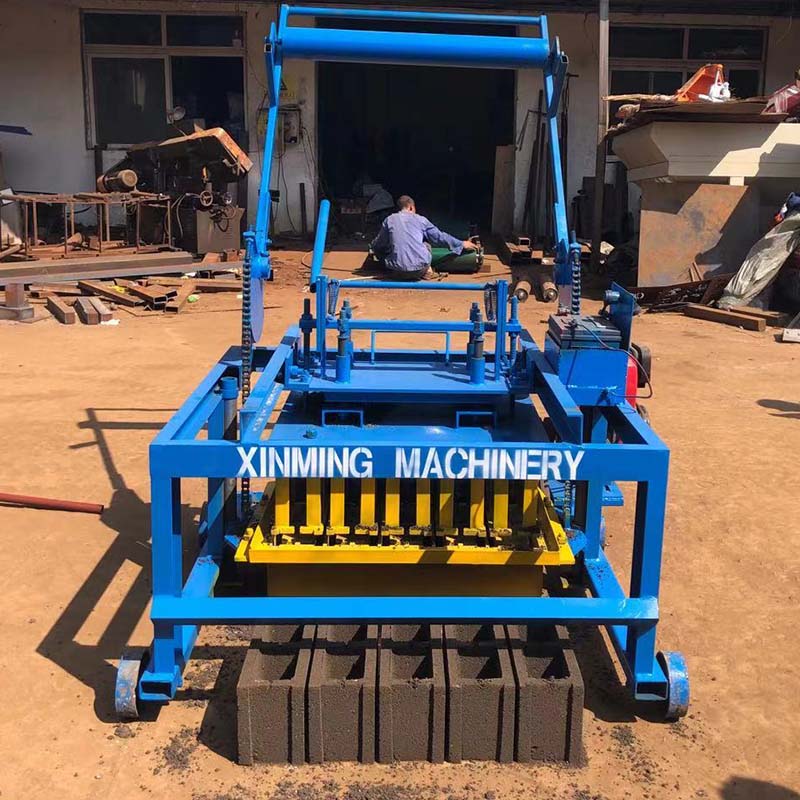
Image source:Aiwei block machine
Introduction
Bricks have been an integral part of construction for centuries, providing strength, durability, and versatility to architectural structures. However, the process of brick-making has evolved significantly with the advent of brick-making machines. These machines have revolutionized the construction industry by offering a range of advantages that enhance efficiency, quality, and sustainability. From increased production rates to improved design flexibility, the advantages of brick-making machines are far-reaching and have a global impact. In this article, we delve into the diverse benefits of brick-making machines from a global perspective, showcasing their transformative influence on modern construction practices.
1. Enhanced Production Efficiency
One of the most significant advantages of brick-making machines is their ability to exponentially increase production efficiency compared to traditional manual methods.
- Higher Output: Automated machines can produce a large quantity of bricks in a shorter time, meeting the demands of large-scale construction projects.
- Consistent Quality: Mechanized processes ensure uniformity, minimizing variations in size, shape, and quality that can occur with manual production.
2. Cost-Effectiveness and Resource Optimization
Brick-making machines offer cost-effective solutions by optimizing resource utilization and reducing labor dependency.
- Labor Savings: Machines significantly reduce the need for manual labor, resulting in reduced labor costs and increased productivity.
- Material Efficiency: Precise mixing and molding techniques reduce material wastage, contributing to cost savings and sustainability.
3. Design Flexibility and Customization
Brick-making machines empower architects and builders with the flexibility to experiment with innovative designs and customized solutions.
- Intricate Patterns: Advanced machines allow the creation of bricks with intricate textures, patterns, and designs, enabling unique architectural expressions.
- Tailored Aesthetics: Builders can customize brick colors, sizes, and shapes to align with specific project requirements and design visions.
4. Time Savings and Project Acceleration
The rapid production capabilities of brick-making machines contribute to shorter construction timelines and faster project completion.
- Timely Deliveries: Quick production turnaround ensures a steady supply of bricks, preventing construction delays due to material shortages.
- Project Scaling: Increased production speeds allow builders to scale up projects without compromising on quality or timelines.
5. Improved Structural Integrity
Brick-making machines produce bricks with consistent quality and density, resulting in enhanced structural integrity and longevity of buildings.
- Uniform Density: Mechanized processes ensure that bricks have uniform density, contributing to stable load-bearing capacity.
- Reliable Performance: Quality control measures applied during machine production ensure the durability and strength of bricks.
6. Energy Efficiency and Sustainability
Modern brick-making machines incorporate sustainable practices and energy-efficient technologies, reducing environmental impact.
- Recycled Materials: Some machines can utilize recycled materials like fly ash, reducing demand for virgin resources and promoting recycling.
- Energy-Optimized Firing: Advanced firing techniques in brick-making machines reduce energy consumption during the firing process.
7. Support for Large-Scale Projects
Brick-making machines are well-suited for large-scale construction projects that require a substantial volume of bricks.
- Infrastructure Development: The efficiency and scalability of machines make them suitable for infrastructure projects, such as roads, bridges, and public buildings.
- Affordable Housing: Mechanized production of bricks supports affordable housing initiatives by ensuring a consistent supply of cost-effective materials.
8. Preservation of Cultural Heritage
In regions with rich historical and cultural heritage, brick-making machines can aid in preserving traditional construction methods while meeting modern demands.
- Cultural Context: Mechanized production can replicate traditional brick designs, allowing for the construction of structures that seamlessly blend with local architecture.
- Revitalization: Brick-making machines support heritage conservation by providing materials that maintain the authenticity of historical structures.
9. Reduction of Carbon Footprint
Incorporating sustainable practices and recycled materials in brick-making machines contributes to environmental conservation.
- Lower Emissions: Efficient production processes and optimized firing techniques result in reduced carbon emissions during brick manufacturing.
- Green Building: Bricks produced through sustainable practices align with green building standards, contributing to environmentally friendly construction.
Conclusion: Shaping the Future of Construction
The advantages of brick-making machines transcend geographical boundaries, reshaping the construction industry on a global scale. These machines optimize efficiency, reduce costs, and enhance design flexibility, enabling builders to realize their architectural visions while meeting the demands of the modern world. From enhancing structural integrity to promoting sustainability, brick-making machines offer a holistic approach to construction that embraces both tradition and innovation. As the construction landscape continues to evolve, the advantages of brick-making machines will remain a driving force in shaping a sustainable, efficient, and dynamic future for global construction practices.
